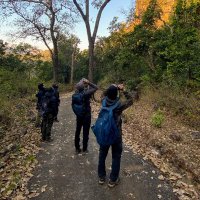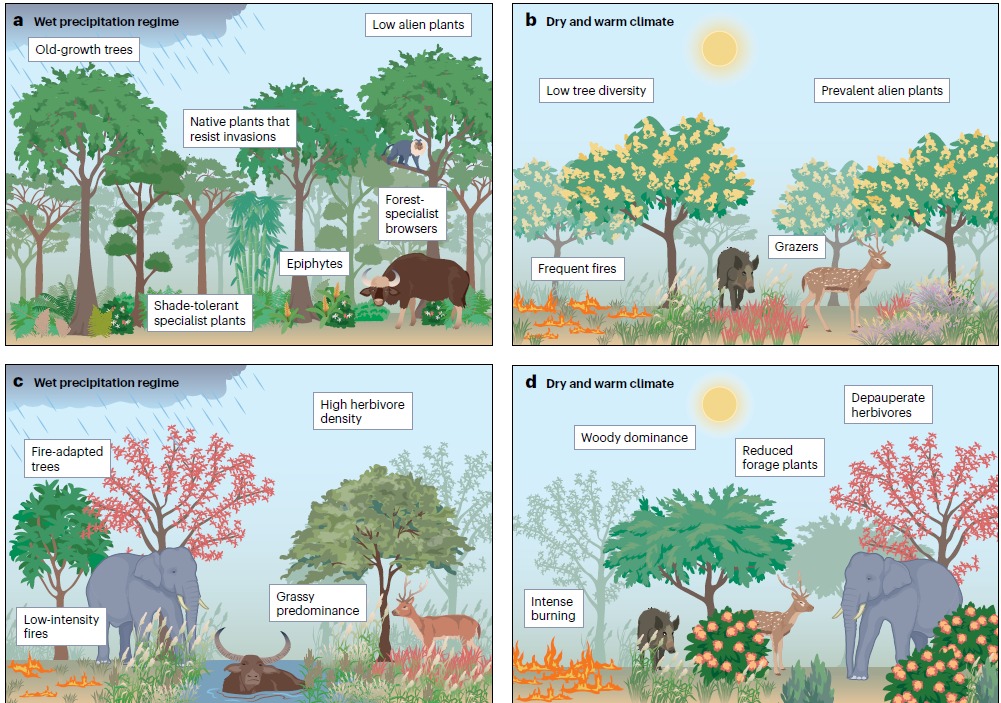
Bioinvasions India
@bioinvnet
Biological Invasions Network of India | Research | Policy | Communication | Management | Restoration |
Led by Ninad Mungi, Monica Kaushik, Rajat Rastogi
ID: 1512017120934395906
07-04-2022 10:39:24
412 Tweet
249 Followers
51 Following

Citizen science is a powerful tool to monitor biological invasions. Here is an interesting case of an invasive species attacking another invasive species in India. Strengthened by iNaturalist india.mongabay.com/2025/05/citize…

There's an urgent necessity of streamlining policies on invasive species. India also requires cohesive actions to prevent intentional introduction and propagation of non-native species. People awareness is pivotal. Bioinvasions India Down To Earth MoEF&CC …downtoearth-org-in.cdn.ampproject.org/v/s/www.downto…


New paper People and Nature: We define Nature-based Solutions and societal adaptations to biological invasions. Solutions must go beyond just removal, particularly at scales with societal trade-offs. We show how to build resilient ecosystems in a globalized world besjournals.onlinelibrary.wiley.com/doi/10.1002/pa…



Invasive species management using bulldozers, chemicals, or mass shooting can be economically prohibitive and have undesirable impacts. This paper offer sustainable alternatives by framing the idea of 'Nature-based Solutions for biological invasions' People and Nature MoEF&CC ECONOVO - DNRF Center of Excellence

New paper People and Nature: We define Nature-based Solutions and societal adaptations to biological invasions. Solutions must go beyond just removal, particularly at scales with societal trade-offs. We show how to build resilient ecosystems in a globalized world Ninad Mungi Jens Svenning

New study by Tropical Forest Research Institute, Jabalpur highlights native tree species that could grow amidst Lantana invasion in dry forests. Timely help for restoration of areas degraded by invasive species MP Forest MoEF&CC Bioinvasions India link.springer.com/article/10.100…

In this commentary, alumnus Divyajyoti Ganguly argues how invasive species aren't just an ecological issue. In India's Banni grasslands there is need to consider human livelihoods & community impact rb.gy/cc4acb MSc Wildlife



Native trees are important even amidst populated cities. They support more biodiversity in the green spaces. Use of non-native trees must be reduced, and native trees must be promoted Sutirtha Lahiri The Hindu Science Bioinvasions India



🐸 A new study reveals that the Asian black-spined toad, Duttaphrynus melanostictus, has since expanded across ecosystems far from its South Asian origins leading to destabilizing biodiversity. 🔗 Find out more: go.nature.com/4lNUBtm #NatureIndia Christophe Dufresnes Sally Wren

New paper: Alien plants interact with land-use change, climate change, and defaunation to reshape ecosystems, often catalyzing the emergence of novel ecosystems Globally, tropics are at the forefront of such transformations Nature Reviews Biodiversity Jens Svenning nature.com/articles/s4435…


Alien plant species, introduced by humans directly or indirectly in different geographical regions of the world, are now spreading at an unprecedented pace, reshaping tropical ecosystems globally 🖊️ Himanshu Nitnaware downtoearth.org.in/wildlife-biodi…

An excellent summary of our recent paper in Nature Reviews Biodiversity “Invasions can trigger wildfires in forests such as Amazon, adding to the rising atmospheric CO2 levels - which may in turn promote woody invasions elsewhere like in African savannas” Paper: nature.com/articles/s4435…

Tropical biomes are vulnerable to invasive plants, due to the legacy of historical human influence and ongoing global changes. Here, alien plants are triggering rapid emergence of novel ecosystems ipbes UN Biodiversity FAO Climate Change & Biodiversity IPCC

